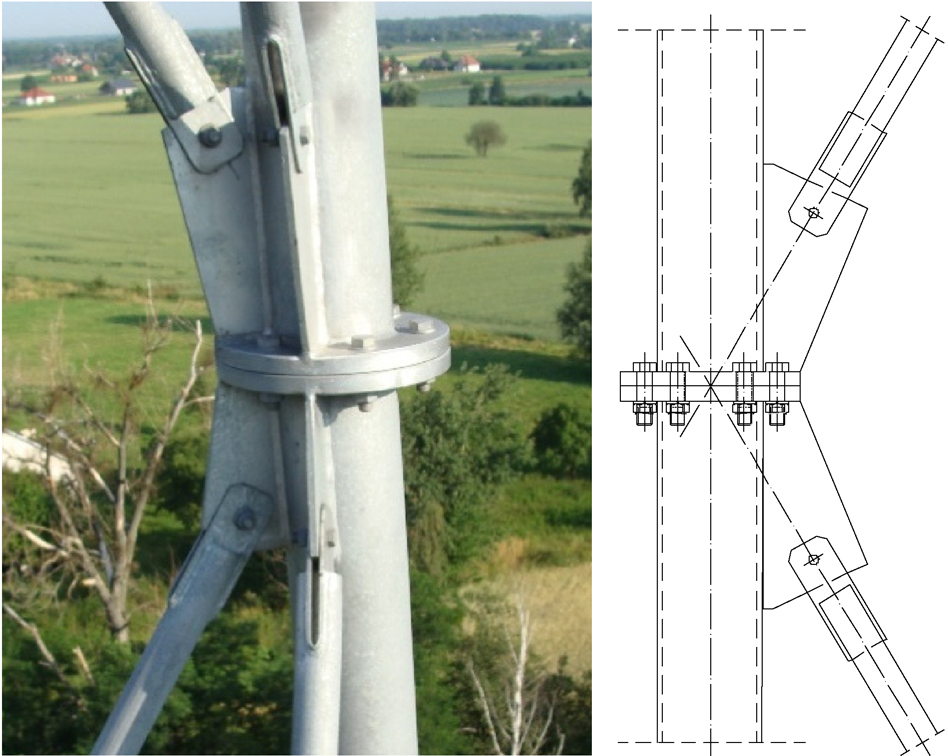The impact of leg spacing of telecommunication towers on their bending stiffness, total weight, and dynamic properties
1
Katedra Mechaniki Konstrukcji:, Politechnika Łódzka, Poland
2
Design Department, Compact-Project.PL Company, Poland
Submission date: 2024-05-07
Acceptance date: 2024-05-28
Publication date: 2025-06-16
Archives of Civil Engineering 2025;71(2):193-208
KEYWORDS
TOPICS
ABSTRACT
The paper presents analyses aimed at determining how the spacing between legs of a steel lattice telecommunication tower affects displacements of its top, its natural frequency, and its self-weight. The critical characteristic of the results is that they were obtained for structures optimized with respect to the load-carrying capacity of their individual components. It was assumed that levels of effort should be kept between 85% and 95%. As far as engineering practice is concerned, the key conclusion is that a larger distance between the legs has a positive impact on the self-weight of the structure. It was demonstrated that a larger leg spacing is related to a smaller self-weight of the tower and thus a smaller quantity of material required. The proposed research and calculation method makes it possible to conclude that providing a larger distance between the legs while optimizing structural members with respect to their effort (preferably by means of an automated process) results in both higher bending stiffness and lower structure self-weight required.
Share
RELATED ARTICLE
We process personal data collected when visiting the website. The function of obtaining information about users and their behavior is carried out by voluntarily entered information in forms and saving cookies in end devices. Data, including cookies, are used to provide services, improve the user experience and to analyze the traffic in accordance with the Privacy policy. Data are also collected and processed by Google Analytics tool (more).
You can change cookies settings in your browser. Restricted use of cookies in the browser configuration may affect some functionalities of the website.
You can change cookies settings in your browser. Restricted use of cookies in the browser configuration may affect some functionalities of the website.




